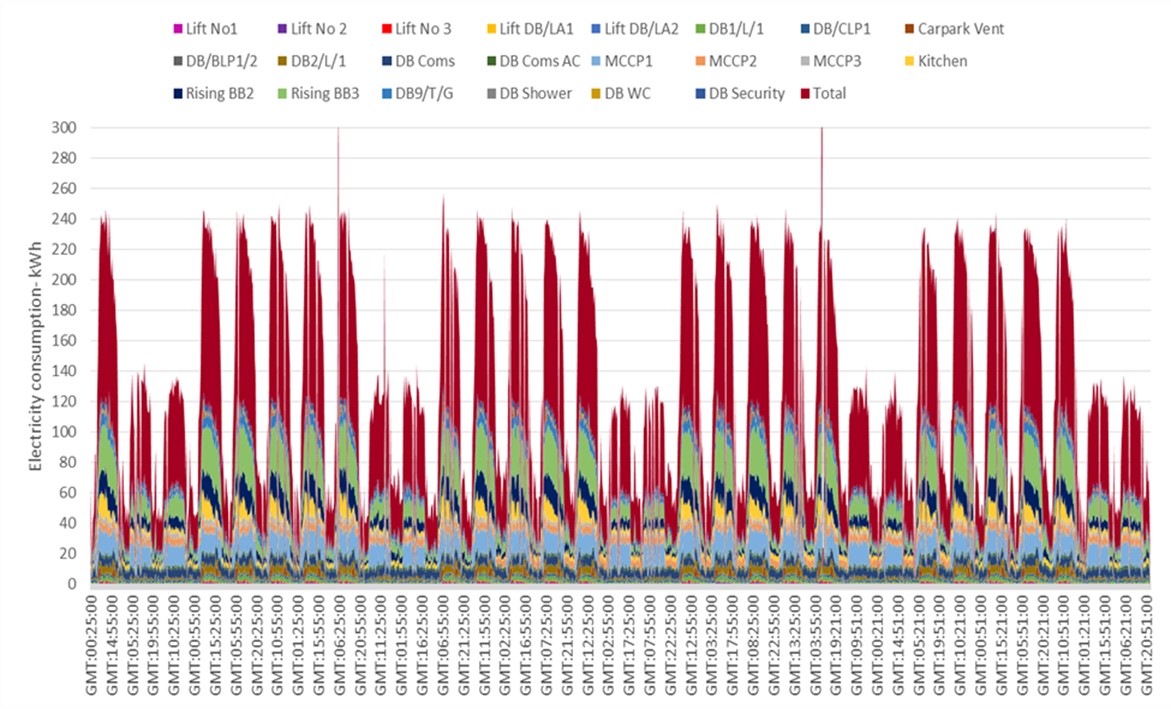Regulated and unregulated energy consumption

|
Contents |
[edit] Introduction
A building’s energy consumption varies considerably according to the building’s function. Its total operational energy usage comprises regulated and unregulated energy. BREEAM broadly defines regulated and unregulated energy consumption as follows:
[edit] Regulated energy
‘Regulated energy is building energy consumption resulting from the specification of controlled, fixed building services and fittings, including space heating and cooling, hot water, ventilation, fans, pumps and lighting. Such energy uses are inherent in the design of a building.’
Designers may not be able to predict how the services and fittings will be used but they can design them to be as energy efficient as possible.
NB The Home Quality Mark One, Technical Manual SD239, England, Scotland & Wales, published by BRE in 2018 defines a regulated energy as; ‘…building energy consumption resulting from the specification of controlled, fixed building services and fittings, including space heating and cooling, hot water, ventilation and lighting.’
[edit] Unregulated energy
Unregulated energy is building energy consumption resulting from a system or process that is not ‘controlled’, ie energy consumption from systems in the building on which the Building Regulations do not impose a requirement. For example, this may include energy consumption from systems integral to the building and its operation, e.g. IT equipment, lifts, escalators, refrigeration systems, external lighting, ducted-fume cupboards, servers, printers, photocopiers, laptops, cooking, audio-visual equipment and other appliances.
Some buildings can have unregulated energy accounting for 50% of total energy use.
Unlike regulated energy use, unregulated energy consumption is usually only determined very late in the design process; it can also vary throughout the building lifecycle. This is because buildings may have different occupants or uses.
NB The Home Quality Mark One, Technical Manual SD239, England, Scotland & Wales, published by BRE in 2018 defines a unregulated energy as; ‘…the energy consumption of the home that is not ‘controlled’, i.e. energy consumption from aspects of the home on which Building Regulations do not impose a requirement. For the purposes of the HQM assessment, this includes energy associated with lighting, appliances and cooking.’
[edit] Building regulations
Designers usually demonstrate compliance with Approved Document L of the building regulations as evidence of a building’s energy efficiency. But this does not fully reflect reality, as regulated energy is only a part of the total. Although they can usually predict regulated energy usage, it becomes more difficult with unregulated energy as predicting user behaviour can be problematic. This means that designers should not be held accountable for total operational energy usage as it is something they can only partly influence.
[edit] Related articles on Designing Buildings Wiki
- Approved document L.
- BREEAM.
- Building Regulations.
- Energy performance certificates.
- Leadership in Energy and Environmental Design (LEED).
- New energy retrofit concept: ‘renovation trains’ for mass housing.
- Operational carbon.
- Performance gap.
- The code for sustainable homes.
[edit] External references
- Bonfield review.
- Energy Saving Trust.
- EU Energy Efficiency Directive.
- Part L (Conservation of fuel and power).
- Planning Portal – Energy Saving.
Featured articles and news
Professional practical experience for Architects in training
The long process to transform the nature of education and professional practical experience in the Architecture profession following recent reports.
A people-first approach to retrofit
Moving away from the destructive paradigm of fabric-first.
International Electrician Day, 10 June 2025
Celebrating the role of electrical engineers from André-Marie Amperè, today and for the future.
New guide for clients launched at Houses of Parliament
'There has never been a more important time for clients to step up and ...ask the right questions'
The impact of recycled slate tiles
Innovation across the decades.
EPC changes for existing buildings
Changes and their context as the new RdSAP methodology comes into use from 15 June.
Skills England publishes Sector skills needs assessments
Priority areas relating to the built environment highlighted and described in brief.
BSRIA HVAC Market Watch - May 2025 Edition
Heat Pump Market Outlook: Policy, Performance & Refrigerant Trends for 2025–2028.
Committing to EDI in construction with CIOB
Built Environment professional bodies deepen commitment to EDI with two new signatories: CIAT and CICES.
Government Grenfell progress report at a glance
Line by line recomendation overview, with links to more details.
An engaging and lively review of his professional life.
Sustainable heating for listed buildings
A problem that needs to be approached intelligently.
50th Golden anniversary ECA Edmundson apprentice award
Deadline for entries has been extended to Friday 27 June, so don't miss out!
CIAT at the London Festival of Architecture
Designing for Everyone: Breaking Barriers in Inclusive Architecture.
Mixed reactions to apprenticeship and skills reform 2025
A 'welcome shift' for some and a 'backwards step' for others.





















